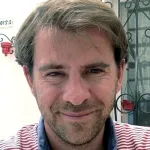
Photo by Lukiyanova Natalia / frenta, Shutterstock: Biologist Jan Skotheim and his team have zeroed in on a previously unknown mechanism within the cell growth cycle that controls cell size.
Stanford Report - September 28th, 2015 - by Bjorn Carey
Cells were discovered in 1676, and almost immediately afterward scientists began wondering why cells are so perfectly small.
More than three centuries later, a team of Stanford biologists have zeroed in on a previously unknown mechanism within the cell growth cycle that controls cell size. The fundamental finding was made by studying yeast cells, but could provide insight to basic human biology as well as diseases such as cancer that thrive by manipulating this mechanism.
The finding is published in Nature.
Cells of all types seemingly "know" just how large to grow, and when they reach that determined size, they divide into new cells. With no clear answer for what triggers this cellular decision, Jan Skotheim, an associate professor of biology at Stanford, began searching for the mechanism nearly a decade ago.
The search started in yeast, and specifically in the molecular pathway controlling cell division. Cell size was known to affect the first part of the cell division pathway to control when cells begin to replicate their DNA, known as the G1/S transition. There are analogous pathways in most organisms, but yeast is relatively simple to manipulate, so if Skotheim and his colleagues could find the trigger in yeast, they could likely apply that knowledge to other species.
The obvious suspect was a protein called Cln3 – as the first protein in the chain of molecular events leading to the G1/S transition, it was the likely trigger to any change regarding cell size and, ultimately, the cell's decision to divide into two cells. But Skotheim's team found that the concentration of Cln3 stayed relatively constant during cell growth. There was no clear, characteristic spike or dip in its concentration to initiate the process.
This was perplexing. All known biologic pathways are initiated by some change or stimulus to the first molecule. In a combination of brilliance and frustration, a postdoctoral researcher in the group, Kurt Schmoller, had the idea to examine the concentrations of the other proteins involved in the pathway. This led them to Whi5, a protein smack in the middle of the pathway.
While the cell produced enough of the other proteins to keep their concentration constant as the cell grew, Whi5 concentration started out high but was continuously diluted as the cell became larger.
"This finding was extremely exciting because it immediately lead to a new idea of how size control could work," said Schmoller, the lead author on the study. "The inhibitor-dilution mechanism, where the cells dilute out an inhibitor of cell division, is very elegant and, in retrospect, seems almost obvious."
To test whether Whi5 was somehow affecting cell size from the middle of the pathway, Skotheim's team began selectively dialing its concentration up and down, and leaving all other proteins as normal.
By lowering the concentration to a certain level, the researchers forced the cells to initiate division at a smaller-than-usual size. Similarly, boosting Whi5 concentration allowed the cell to grow larger than normal before dividing.
This was a complete surprise to the researchers. Signaling pathways traditionally jump into action by stimulating the beginning of the pathway and then transmitting that information down the line in a chain reaction.
"We don't know of any other pathways that operate like this," Skotheim said. "This looks like a huge breakthrough for us to solve this really old problem."
Although the work was driven to solve a fundamental question in biology, the finding could eventually have far-reaching implications. The yeast pathway is analogous to a similar pathway in humans, and provides a good sketch for understanding human biology. For instance, diseases can manipulate that pathway, a prime example being cancerous cells that grow rapidly and proliferate.
In addition to thinking about these implications, Skotheim's group plans to conduct a genome-wide analysis to identify other biologic processes that might be impacted by cell size. Very little is known about how things like cell size and geometry affect signaling pathways, he said, but if some key protein concentrations change as cells grow, cell size could affect anything.
"Tons of things have been learned from studying the yeast cell cycle that apply directly to human cells," Skotheim said. "Finding something like this that's so intuitively unlikely, I don't think we could have done it without the yeast work. But now we can test it, and we plan to apply these models to human cells."
Also contributing to the research were two other members of Skotheim's lab, graduate student Jon Turner and postdoctoral researcher Mardo Koivomagi.

